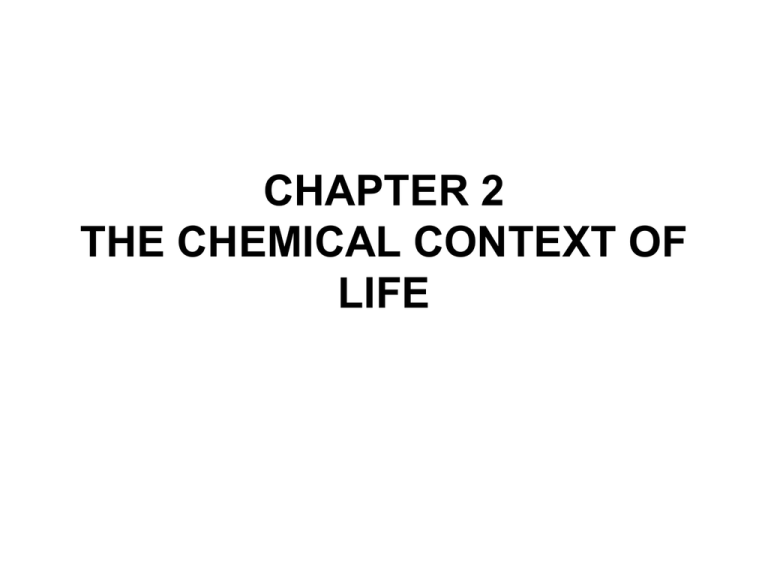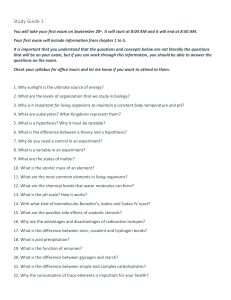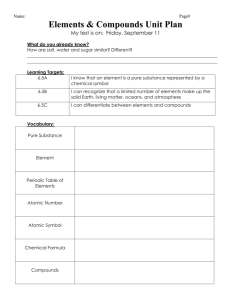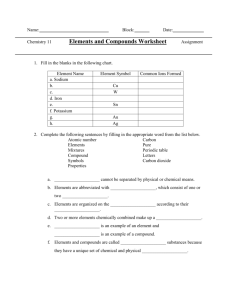CHAPTER 2 THE CHEMICAL CONTEXT OF LIFE
advertisement

CHAPTER 2 THE CHEMICAL CONTEXT OF LIFE Section A: Chemical Elements and Compounds 1.Matter consists of chemical elements in pure form and in combinations called compounds 2.Life requires abut 25 chemical elements Introduction • Nature is not neatly packaged into the individual life sciences. • While biologists specialize in the study of life, organisms and the world they live in are natural systems to which the basic concepts of chemistry and physics apply. • Biology is a multidisciplinary science, drawing on the insights from other sciences. • Life can be organized into a hierarchy of structural levels. • At each successive level additional emergent properties appear. Fig. 2.1 1. Matter consists of chemical elements in pure form and in combinations called compounds • Organisms are composed of matter. – Matter is anything that takes up space and has mass. • An element is a substance that cannot be broken down to other substances by chemical reactions. – There are 92 naturally-occurring elements. – Each element has a unique symbol, usually from the first one or two letters of the name, often from Latin or German. • A compound is a substance consisting of two or more elements in a fixed ratio. – Table salt (sodium chloride or NaCl) is a compound with equal numbers of chlorine and sodium atoms. – While pure sodium is a metal and chlorine is a gas, their combination forms an edible compound, an emergent property. Fig. 2.2 2. Life requires about 25 chemical elements • About 25 of the 92 natural elements are known to be essential for life. – Four elements - carbon (C), oxygen (O), hydrogen (H), and nitrogen (N) - make up 96% of living matter. – Most of the remaining 4% of an organism’s weight consists of phosphorus (P), sulfur (S), calcium (Ca), and potassium (K). How Can I Remember This? • Think “CHNOPS” Carbon Hydrogen Nitrogen Oxygen Phosphorus Sulfur Make up 96% of organisms • Trace elements are required by an organism but only in minute quantities. – Some trace elements, like iron (Fe), are required by all organisms. – Other trace elements are required only by some species. • For example, a daily intake of 0.15 milligrams of iodine is required for normal activity of the human thyroid gland. Nice Goiter! Fig. 2.4






